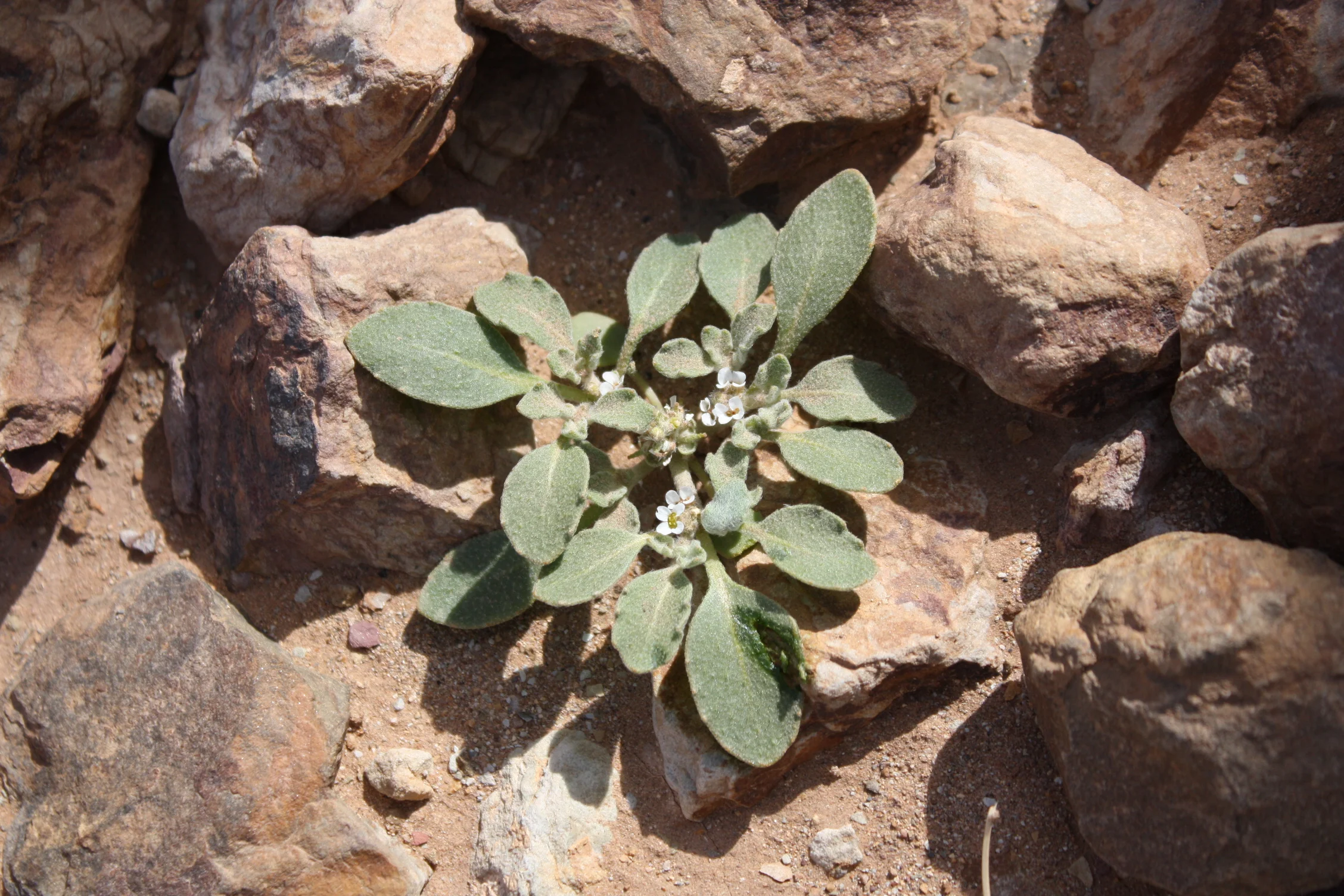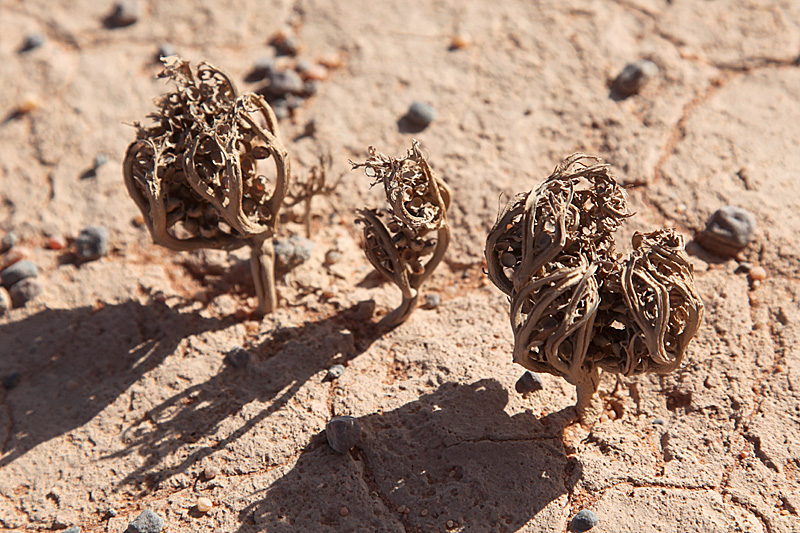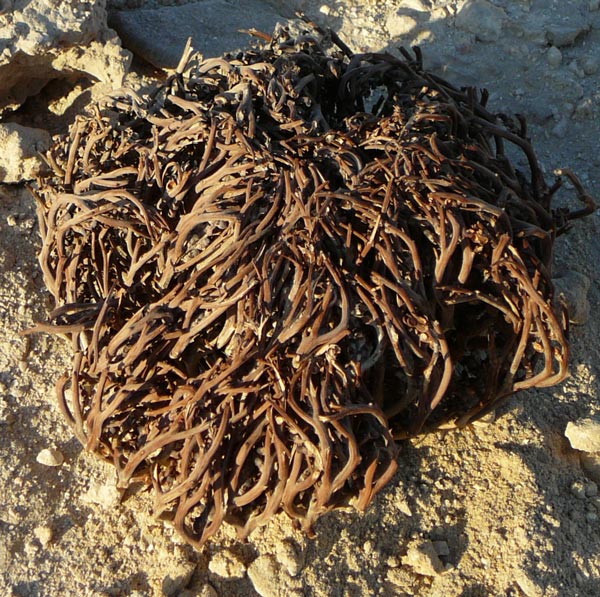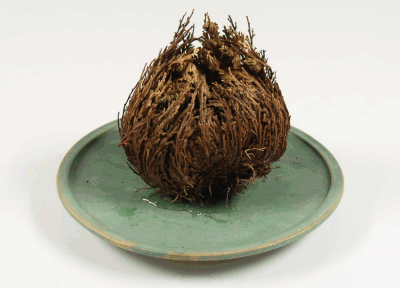To survive in a desert, plants must eek out an existence in specific microclimates that provide conditions that are only slightly better than the surrounding landscape. Such is the case for the Rose of Jericho (Anastatica hierochuntica). This tenacious little mustard is found throughout arid regions of the Middle East and the Saharan Desert and it has been made famous the world over for its "resurrection" abilities. It is also the subject of much speculation so today we are going to separate fact from fiction and reveal what years of research has taught about this desert survivor.
Natural selection has shaped this species into an organism fully ready to take advantage of those fleeting moments when favorable growing conditions present themselves. A. hierochuntica makes its living in dry channels called runnels or wadis, which concentrate water during periods of rain. It is a desert annual meaning the growth period of any individual is relatively short. Once all the water in the sandy soil has evaporated, this plant shrivels up and dies. This is not the end of its story though. With a little luck, the plants were pollinated and multiple spoon-shaped fruits have formed on its stems.
As the dead husk of the plant starts to dry out, its branches curl up into a ball-like mass with most of the fruits tucked away in the interior. There the plant will sit, often for many years, until rain returns. When rain does finally arrive, things happen fast. After all, who knows how long it will be before it rains again. Thanks to a quirk of physiology, the dried tissues of A. hierochuntica are extremely elastic and can return to their normal shape and position once hydrated. As the soil soaks up water, the dried up stems and roots just under the surface also begin taking up water and the stems unfurl.
To call this resurrection is being a bit too generous. The plant is not returning to life. Instead, its dead tissues simply expand as they imbibe liquid. Water usually does not come to the desert without rain and rain is exactly what A. hierochuntica needs to complete its life cycle. Unfurling of its stems exposes its spoon-shaped fruits to the elements. Their convex shape is actually an adaptation for seed dispersal by rain, a mechanism termed ombrohydrochory. When a raindrop hits the fruit, it catapults the seed outward from the dead parent.
Photo by Roland Unger licensed under CC BY-SA 3.0
If rains are light, seeds do not get very far. They tend to cluster around the immediate area of their parent. If rains are heavy, however, seeds can travel quite a distance. This is why one will only ever find this species growing in channels. During the rare occasions when those channels fill with water, seeds quickly float away on the current. In fact, experts believe that the buoyancy of A. hierochuntica seed is an adaptation that evolved in response to flooding events. It is quite ironic that water dispersal is such an important factor for a plant growing in some of the driest habitats on Earth.
To aid in germination, the seeds themselves are coated in a material that becomes mucilaginous upon wetting. When the seeds eventually come into contact with the soil, the mucilage sticks to the ground and causes the seeds to adhere to the surface upon drying. This way, they are able to effectively germinate instead of blowing around in the wind.
Again, things happen fast for A. hierochuntica. Most of its seeds will germinate within 12 hours of rainfall. Though they are relatively drought tolerant, the resulting seedlings nonetheless cannot survive without water. As such, their quick germination allows them to make the most out of fleeting wet conditions.
Photo by Nikswieweg at German Wikipedia licensed under CC BY-SA 2.0 DE
Occasionally, the balled up husks of these plants will become dislodged from the sand and begin to blow around the landscape like little tumbleweeds. This has led some to suggest that A. hierochuntica utilizes this as a form a seed dispersal, scattering seeds about the landscape as it bounces around in the wind. Though this seems like an appealing hypothesis, experts believe that this is not the best means of disseminating propagules. Seeds dispersed in this way are much less likely to end up in favorable spots for germination. Though it certainly occurs, it is likely that this is just something that happens from time to time rather than something the plant has evolved to do.
In total, the Rose of Jericho is one tough cookie. Thanks to quick germination and growth, it is able to take advantage of those rare times when its desert environment become hospitable.




